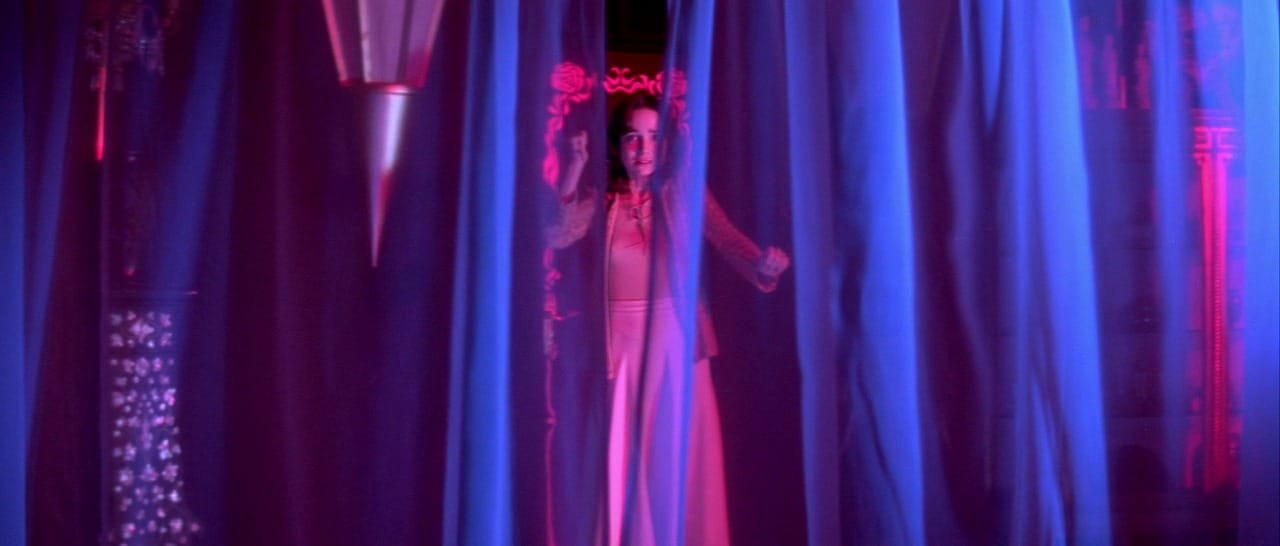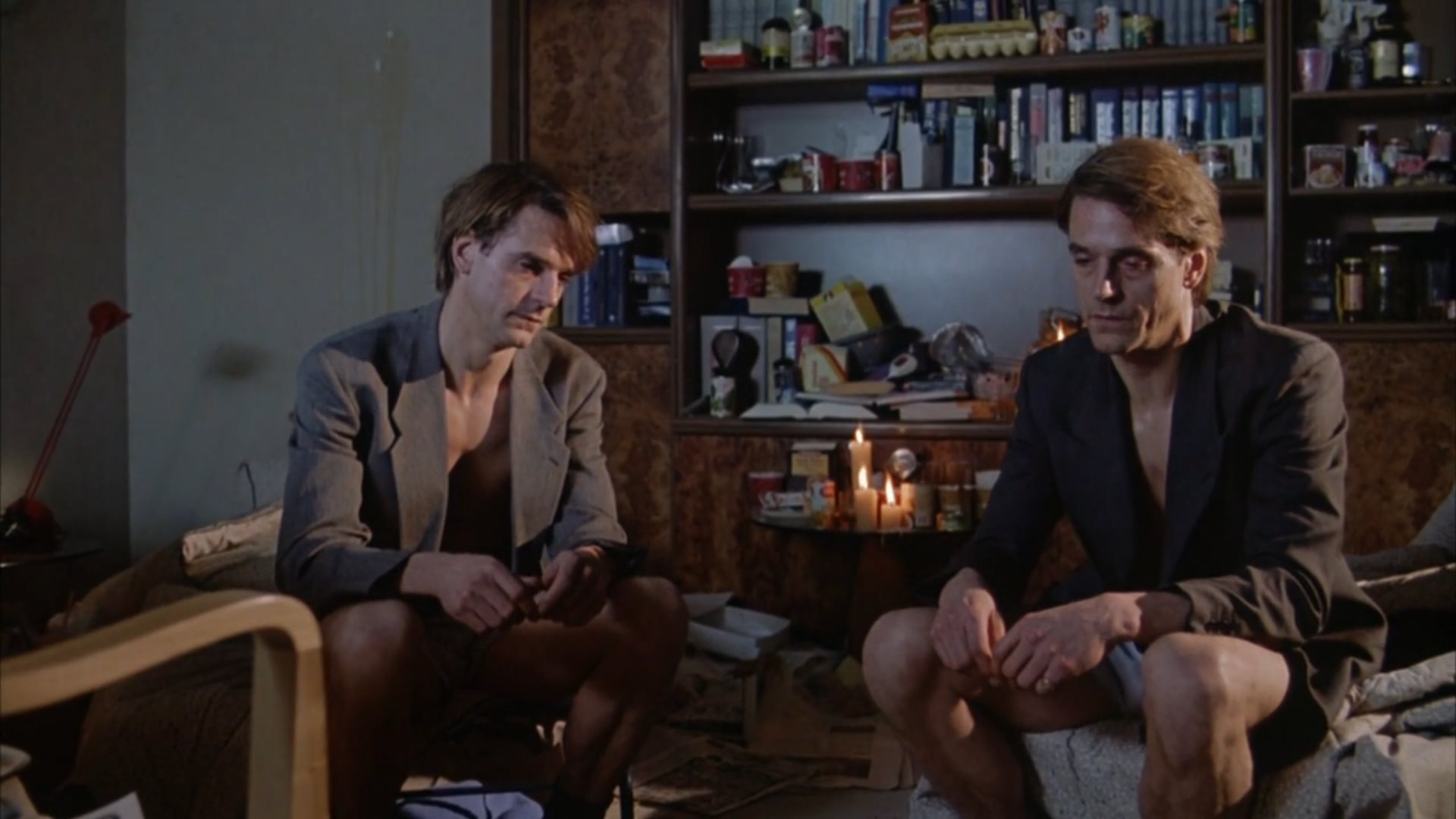“Giallo” translates to “yellow” in Italian. The term refers to a specific genre of Italian cinema that was prevalent in the 1970s, typically featuring intricate mystery or whodunit narratives, psychological horror, nudity, lurid sexual scenes, meticulously staged murders, psychopathic characters, slick, gratuitous violence, and a certain arthouse elegance and sophistication in visual style. It stems from the yellow covers of mystery and crime thriller novels by authors such as Agatha Christie, Edgar Allan Poe, and Raymond Chandler, that were translated into Italian and published by Mondadori Press in the 1920s.
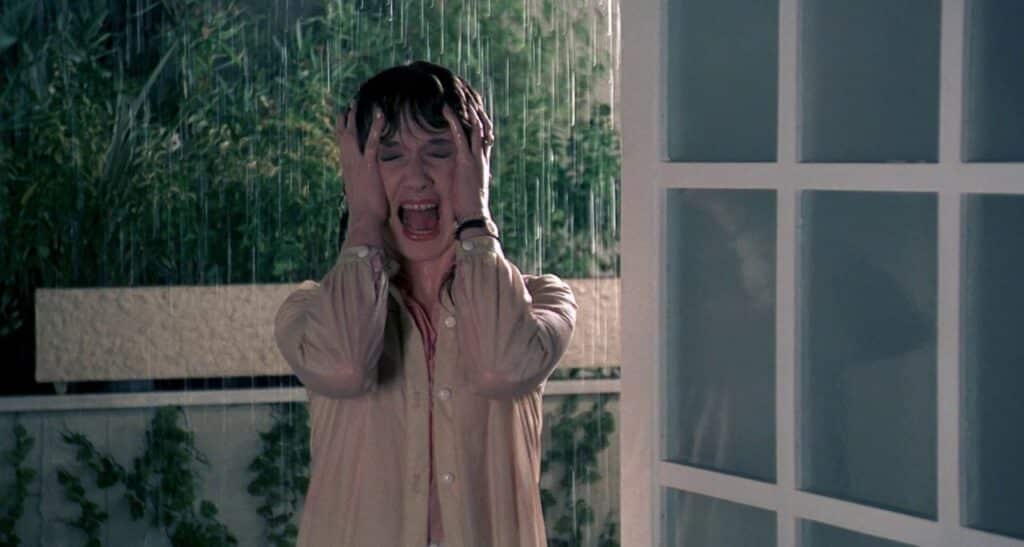
One aspect that makes Tenebrae (1982) a distinctive film within the giallo genre is its self-referential nature. During a stay at a Los Angeles hotel, Argento was plagued by chilling phone calls from a fervent admirer of his work. As disclosed in Argento’s memoir, “Fear”, the caller’s demeanour shifted dramatically, culminating in a sinister vow to murder Argento. This unsettling encounter constituted the catalyst for Tenebrae. Tenebrae follows American crime novelist Peter Neal, portrayed by Anthony Franciosa, who finds himself entangled in a murder investigation during a book tour in Rome, with the killings seemingly mirroring his literary creations. The film mirrors Argento’s experience, with Neal, akin to Argento, being a connoisseur of the giallo genre and facing backlash from critics. One critic deems Neal’s work as sadistic and misogynistic, paralleling Argento’s real-life critics. The critic seems to be simultaneously weirdly fascinated and repulsed by his work.
At the time of its premiere in 1982, Tenebrae was met with disdain in the UK, and, as a result, it was significantly edited and added to the ‘video nasty’ list. Currently, the film is hailed as one of the Italian horror director’s most masterful films, as well as an introspective, self-referential, and deconstructive exploration of Argento’s filmography, experiences with critics, and the conventions typical of Italian giallo films. Its underlying exploration of the nature and impact of violent media on its consumers, of misogyny, and giallo storytelling has led to a reevaluation by critics.
Tenebrae features the captivating visuals and overall cinematography by Luciano Tovoli and the typical atmosphere-enhancing soundtrack by Goblin. Contrary to its name, which in Latin translates to “darkness”, Tenebrae is characterised by its vivid and intense lighting, underscoring the idea that the darkness alluded to is in fact a metaphor for the unconscious forces residing within the human psyche. The Rome depicted in the film deviates from the traditionally idyllic and historic portrayal commonly seen in films – it is rendered as an indistinct, clean, modern urban landscape dominated by towering structures, vast, somewhat desolated areas, and a surreal, futuristic ambiance enriched by the haunting synth and electronic sounds from the progressive rock soundtrack by Argento’s favourite band, Goblin. The dreamlike, otherworldly atmosphere heightens the sense of unease and dread.
On a narrative level, the trauma is revealed through phantasmagoric flashback sequences that provide a backstory for the killer, revealing the traumatic events that shaped their psychological makeup and motivated their actions. These flashbacks delve into the character’s past, uncovering the roots of their violence and linking their murders to a desire for revenge or retribution. The character suppresses their desires and emotions, only for them to emerge in violent and destructive ways. This is reflective of the broader theme of the relationship between violence and sexuality, with the film suggesting that the suppression of sexual desire can lead to violent outbursts. The flashbacks delve into the character’s past, uncovering the roots of their violence and linking their murders to a desire for revenge or retribution. The use of surreal and disorienting imagery creates a sense of unreality, reflecting the way in which trauma can warp and distort our memories and perceptions. The dreamlike flashbacks can also be seen as a reflection of the film’s themes of voyeurism and the nature of cinema itself.
Tenebrae explores Argento’s familiar motifs, including the glamorisation of violence, Freudian thought, stylised voyeurism, deep-seated, trauma, murderous desires, duality, and the return of the repressed. Tenebrae also stands out as an entirely captivating, masterfully designed whodunit, featuring a plethora of surprising plot shifts that keep the viewer on edge. The narrative is dotted with deceptive and suspicious figures hiding behind their personas, all of whom have conceivable motives for homicide and an air of ambiguity in their movements, situations, and discourse that makes them seem culpable.
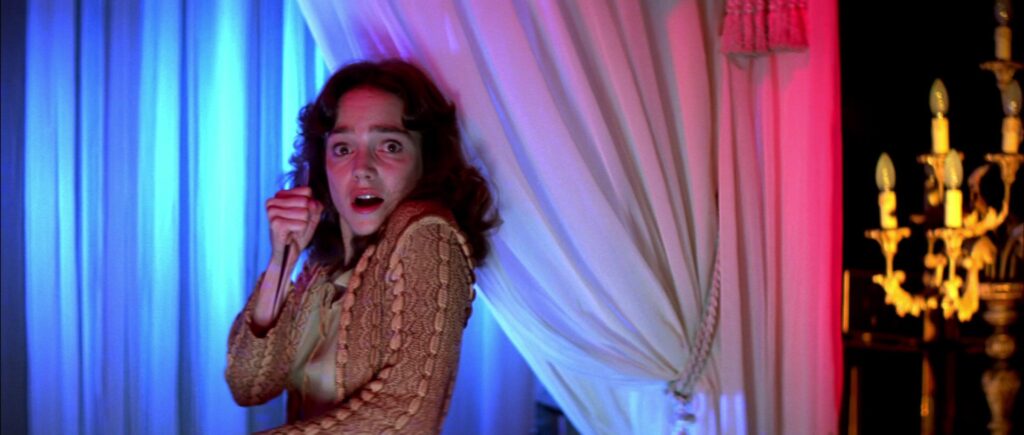
Suspiria (1977), a classic horror masterpiece by Dario Argento, is the first film of the Three Mothers trilogy by Argento, followed by Inferno (1980), and The Mother of Tears (2007). Arguably the most vividly coloured, aesthetically pleasing classic horror film, Suspiria unravels the complex psychological journey of its protagonist within a surreal and haunting narrative. It is generally considered to be Argento’s departure from the typical giallo roots of his films towards supernatural horror, although it encapsulates elements of both genres. The film follows a young American ballet dancer, Suzy Bannion, who finds herself in the midst of mysterious and sinister events after enrolling in a prestigious dance academy in Germany. Themes of isolation, paranoia, power, and the loss of innocence are intricately woven into the narrative, challenging the viewer’s perception of reality. Dark forces seek to dominate and consume, mirroring the way in which fear and evil can infiltrate and corrupt the human psyche.
Distinguished by its ingenious amalgamation of ghastly themes with a lush, hyper-saturated visual tableau, the film can be likened to a fever dream. The vibrant, psychedelic colour palette, dominated by deep reds and stark blues, creates an otherworldly atmosphere that is both arresting and disquieting – a sensory overload that reflects the inner turmoil and chaos that permeates the film’s narrative. This vivid visual style, characterised by its meticulous attention to detail and captivating use of colour, is symbolic, echoing the emotions and psychological states of the characters. The blood-red hues, for instance, are emblematic of the violence and terror that lurk within the walls of the dance academy, while the cool blues serve as a stark contrast, representing the false sense of security that the institution appears to offer.
The stunning, intricate set designs add to the dreamlike quality of the film, creating a world that blurs the line between fantasy and nightmare. The motifs of mirrors, shadows, and labyrinthine architecture heighten the sense of disorientation and fear, culminating in a film that is as much an exploration of its characters’ psyches as it is a visual and thematic triumph. The labyrinthine corridors and hidden chambers of the dance academy symbolise the complex and dark recesses of human consciousness.
The aesthetics of Suspiria are further accentuated by the hauntingly beautiful soundtrack composed by Argento’s favourite musical collaborators, the Italian progressive rock band, Goblin. The eerie, cult-like melodies contribute significantly to the film’s hypnotic surrealism, creating a sense of unease and anticipation that keeps the viewer on the edge of their seat. The music is an integral part of the film’s narrative, underscoring the tension and horror that unfolds onscreen.

Blood and Black Lace (1964) is a quintessential, early giallo by Mario Bava, combining arthouse elements and unnatural hues with exploitation and gore. In Blood and Black Lace, the plot—revolving around a mysterious killer targeting models at a high fashion house—serves as a backdrop to Mario Bava’s visually stunning and wonderfully designed set pieces. The narrative is an intricate web of deception, violence, and mystery, unfolding within an atmosphere of paranoia, suspense, and impending doom, with sexual undertones. As models are killed one after another, dark secrets and pasts are unveiled, reflecting the fragmented nature of human psychology. The gruesome murders – depicted through fetishistic images – represent a catalyst for the characters to confront their inner demons, peeling back the layers of their seemingly polished exterior to reveal the chaos and darkness that lies beneath.
The psychology behind the plot is deeply interwoven with themes of obsession, identity, corruption, and the pervasive nature of evil. The fashion house, with its glamorous facade, symbolises the layer of respectability and civility that often masks the basest human instincts. The killer, wearing a featureless mask stripping them of any humanising features, represents the anonymity of evil, an omnipresent force that can manifest in the most unexpected places and people. The models symbolise the dual nature of human identity, their outward beauty belying the ugliness of their secrets.
Bava employs his signature, exquisite style, utilising rich, saturated colours and dramatic lighting to create a dream-like atmosphere that reflects the distorted reality of the film’s narrative. The use of mirrors and reflections further emphasises the theme of duality, mirroring the dual nature of the characters and the world they inhabit. The film’s soundtrack, a haunting melody that perfectly encapsulates the tension and terror of the narrative, adds another layer to the psychological complexity of the film.
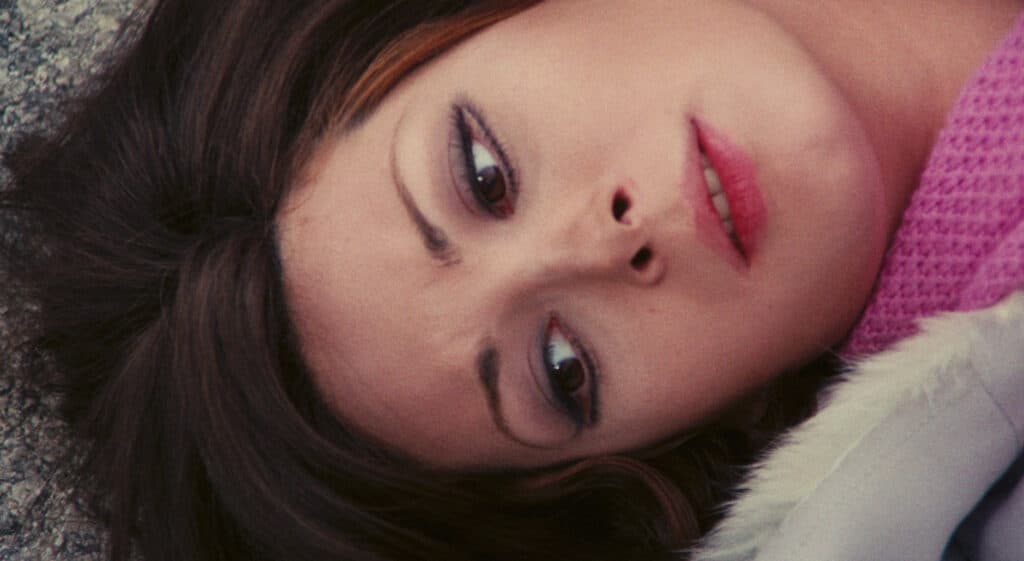
Your Vice is a Locked Room and Only I have the Key (1972), directed by Sergio Martino, blends elements of gothic horror, thriller, and mystery to create a distinct and captivating cinematic experience. The intriguing, unique title alludes to the 1969 giallo The Strange Vice of Mrs. Wardh, also directed by Martino, establishing an interconnected giallo universe.
The film revolves around the character of Oliviero, a failed writer who lives in a dilapidated mansion with his wife, Irina. The tension and resentment between the characters are palpable, with Oliviero’s abusive behavior towards Irina forming a significant part of the narrative. The plot thickens when a series of murders occurs, with the victims all being close to Oliviero, thus making him the prime suspect. The mystery deepens as the characters try to unravel the true identity of the murderer. A black cat named Satan acts as a symbolic representation of the characters’ psychological turmoil and moral corruption. Does this sound familiar to anyone? It was indeed, inspired by Poe’s short story, The Black Cat. You will also notice some other gothic influences in the visuals as well, as the film deviates from the urban giallo landscape.
Your Vice is a Locked Room and Only I Have the Key stands out for its psychological complexity and depth of characterisation. The film delves into the dark recesses of human nature, exploring themes of decadence, perversion, and the thin line between reality and madness. The characters are well-developed and multi-dimensional, adding a layer of depth to the narrative.
The film is also known for its striking visual aesthetics, with Martino employing a rich palette of colours, intricate camera movements, and sharp angles to create a surreal and unsettling atmosphere. The use of music, especially the haunting score, adds to the overall mood of the film, heightening the suspense and tension.
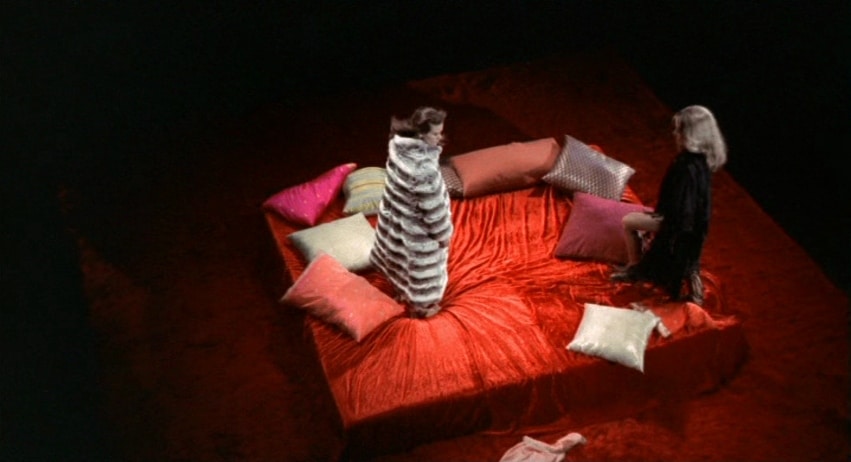
A Lizard in a Woman’s Skin (1971), directed by Lucio Fulci, is a psychological thriller that combines the giallo genre with surreal, hallucinogenic imagery. The narrative follows Carol Hammond, played by Florinda Bolkan, a woman who is plagued by vivid, sexually charged nightmares that seem to blur the line between reality and fantasy. As the story unfolds, Carol finds herself embroiled in a murder investigation after her dream seemingly comes to life.
The film explores themes of repressed sexuality, identity, and the subconscious mind. The title itself, A Lizard in a Woman’s Skin, alludes to the shedding of one’s outer layer to reveal their true nature, much like a lizard shedding its skin. This metaphor is reflective of Carol’s journey as she confronts her inner desires and suppressed emotions. The film significantly delves into the realm of psychoanalysis and the interpretation of dreams, reflecting Fulci’s engagement with Freudian theory. The character’s dreams unveil her “forbidden” fantasies and internal conflicts shaped by societal norms and familial expectations. The intersection of dreams and reality blurs as these nightmarish visions start permeating her waking life, ultimately leading to a distorted perception of reality. The psychological is intertwined with the mystical.
The use of psychedelic visuals and dream sequences sets A Lizard in a Woman’s Skin apart from other giallo films of the time. Fulci employs a range of visual effects, including split screens, slow motion, and distorted images, to create a surreal landscape that mirrors Carol’s mental state. These stylistic choices enhance the narrative, as well as immersing the audience in the protagonist’s psychological turmoil. The film’s score, composed by Ennio Morricone, enhances the film’s atmosphere, as the haunting melodies and discordant tones heighten the tension and contribute to the overall sense of unease.

